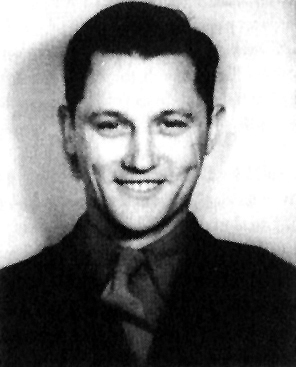
Ryan, Michael P., 330350
Awarded the Navy Cross for action at Tarawa
Osage city, Kansas, company commander Company L, 3rd Battalion, 2nd Marines.
"For extraordinary heroism, great determination and leadership, conspicuous fighting spirit, great personal bravery, and tactical skill. when his battalion commander failed to reach shore, as senior officer Ryan assumed command of the badly disorganized and isolated survivors of three battalions. He organized and directed critical operations of these elements throughout the battle until he was relieved, leading assults on enemy positions, retaining initiative in his sector, and clearing his isolated beachhead into which reinforcements could be moved."
Ryan also recieved the British Distinguished Service Order.
We landed on the coral to the left of the small ship on the reef, disembarked, and headed in. I was in the Battalion Reserve, Company "L", which came in slowly and very disorganized. As soon as my company came in, we moved in behind Company "I". Men were still coming in in driblets. Two medium tanks got in over the reef, and the Engineers blasted a hole in the sea wall for them to come through. We put three companies abreast, took two medium tanks, but the two tanks were knocked out. It was then about 1630. We could not find a radio in communication with Division and later found the Second Battalion's. The next morning we got another medium tank and Naval gun fire came from somewhere. We sent a message recommending that troops land on Green Beach. We attacked with the tank and Naval gun fire support about 1100. There was little opposition. Upon receiving word that troops would land on Green Beach we sent another message saying that Green Beach South was mined. We had about 150-200 yards inland of Green Beach. The next day we received orders to stand fast, that the Sixth Marines were moving to our right.
Q. Was there much fire coming from the South coast to the East?
A. No.Q. Were there many Japs in the personnel dugouts on Beach Red l?
A. Yes. On coming down we bypassed them, but later got them out with flame throwers.Q. Did anybody land on the east of Beach Red l?
A. No.Q. What knocked out the AmphTracs?
A. It seemed to be a 4Omm; some of them were burning.Q. What was your casualty situation?
A. The Doctor set up an aid station on the beach and was there for about three days, when he moved inland for shelter.Q. What was the tie in with 3/6?
A. They came in the day following 1/6 had took over our lines so that we could reform. We then took over the lines and 3/6 moved in behind 1/6.
We did not have flourescent panels when we went in. The old black and white ones were distributed but the flourscent panels came, in aboard ship.
The men shed their packs on the way in, because they were too heavy, afthough there was little else besides rations in them. It is recommended that no packs be taken.
There were few gas masks discarded for the reason that they were too hard to remove. The entrenching tool is an essential piece of equipment.
Rations - It is recommended that l/3 each of C, D, and K be carried.
Ponchos were not needed in this operation, not even for the wounded. They use no cover.
There were no mines on Reach Red 1.
The 50 cal. on the AmphTracs fired but opened up too far out, dispersing the fire. It is believed however, that it keeps the enemy down.
We were about ten minutes from the beach when Naval gun fire lifted and the air was strafing the beach, just about before we landed. My first wave crossed the line of departure at about 0830. The actual operation was excellent as compared to the rehersal.
The main cause for the delay in reaching the beach was that the transports were in area B instead of A. The transports were practically west of the Island. They were ordered to move 2000 yards north because they were in the support group positions.
source: "REPORTS OF BATTALION COMMANDERS", 22 December 1943.
copyright 2003 Wheaton, Illinois
Created 31 October 99 - Updated 20 June 2003

Return to Index
Return to Navy Cross Index